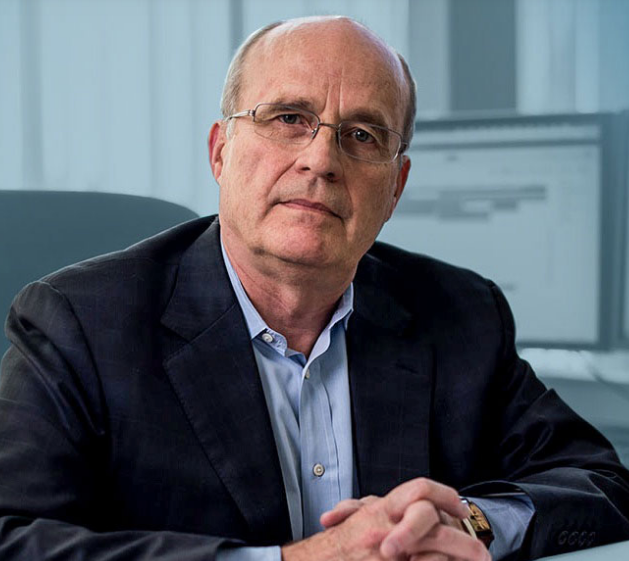Discussing the Difficulty of the Import Problem

Image courtesy Lynn Webster.
This editorial by Lynn R. Webster, MD was published in The Hill on August 31, 2018. Lynn R. Webster, MD is a vice president of scientific affairs for PRA Health Sciences and consults with pharmaceutical companies. Webster is a former president of the American Academy of Pain Medicine. Webster is the author of “The Painful Truth: What Chronic Pain Is Really Like and Why It Matters to Each of Us.”
Can Scott Gottlieb reverse the opioid crisis?
The Food and Drug Administration (FDA) Commissioner Scott Gottlieb issued a press release this week citing all of the FDA's accomplishments in curbing the opioid crisis.
The FDA's efforts are laudable, and they may be able to “turn the tide” of the opioid crisis in America, as former U.S. Surgeon General Vivek Murthy proposed. Seemingly, most of the government efforts to solve the overdose epidemic, to date, have revolved around lowering the number of prescriptions. Gottlieb’s press release cites that the amount of opioids prescribed is at a 15-year low. Yet the preliminary data for 2017 suggests there were a record breaking 72,000 drug-related deaths.
There appears to be a disconnect between the amount of opioids prescribed and the number of drug overdoses. In fact, there is an inverse relationship between the two. This leaves Gottlieb with an enormous problem.
Underscoring the changing nature of the opioid problem from prescription opioids to illicit fentanyl, Gottlieb estimated "that about 9 percent of the parcels shipped into America through nine international mail facilities contain illegal drugs, which includes synthetic opioids like fentanyl." He plans to increase inspections of packages that are shipped to the United States. In addition, the FDA is in the process of shutting down unregulated websites that sell opioids.
However, the FDA, by its own admission, is not capable of inspecting more than 0.1 percent of the packages they presume contain drugs through the international facilities. This leaves a window of opportunity for huge amounts of illicit drugs to enter the States.
Sam Quinone, author of, “Dreamland: The True Tale of America’s Opiate Epidemic,” discusses the difficulty of plugging up the import problem because of the ingenious methods used to sneak drugs into the country. He writes about how one drug clan "shipped its heroin in small metal tubes they fed to cows in Mexico. When the cows reached Chicago, they were slaughtered and the tubes were retrieved."
Unbelievably, some of the deadly drugs appear to be entering our correction institutions which should have the highest security. On the same day Gottlieb announced his aggressive steps to address the opioid crisis, The Cincinnati Enquirer reported that "a mixture of heroin and fentanyl has been identified as the substance that sickened 29 people, including staff and inmates, at Ross Correctional Institution in Chillicothe [Ohio] on Wednesday [August 29, 2018]."
The incident began when an inmate became ill, and people who came in contact with him then became ill through exposure. An unknown number of them were treated with the opioid reversal agent, naloxone. One unconscious person was admitted to nearby Adena Medical Center. The others were released after a period of observation.
In addition, according to NBC News, all of the prisons in Pennsylvania’s correction system were placed on an indefinite lockdown this past Wednesday after multiple staff members experienced a mysterious illness. The Pennsylvania Department of Correction was investigating which "unknown substances" might have caused it.
At this time, authorities don’t know how illicit drugs may have made their way into correctional institutions. However, it reinforces the fact that the United States has a colossal illicit drug problem. Counterfeit drugs, rather than prescription drugs, seem to be at the core of it. Below are three more examples of how illicit drugs have sickened or killed those who were exposed to them.
JAMA Internet Medicine cites a concentration of health problems in the San Francisco area from Oct. 15 through Dec. 31, 2015. Due to illegally purchased counterfeit alprazolam tablets, 8 people between the ages of 8 months and 45 years old were exposed to fentanyl and, "in some cases, etizolam."
That led to hospitalizations and at least one death. Alprazolam is a prescription medication commonly used for anxiety. This distressing situation shows that deadly fentanyl analogues are killing Americans who are using laced non-opioid prescriptions.
Even common non-opioid illicit drugs are being adulterated with the deadly agents. Cocaine-related overdose deaths have increased by 60 percent since 2010, even though cocaine use has decreased.
The American Journal of Public Health explains these deaths "occurred when opioids, primarily heroin or synthetic opioids, also were involved and corresponds to the growing supply and use of heroin and illicitly manufactured fentanyl in the United States."
We saw how lethal fentanyl could be as early as 2002. Chechen militants were holding hostages at Moscow's Dubrovka Theatre. The New York Times reports that Russian security police "might have used an aerosol version of a powerful, fast-acting opiate called Fentanyl to knock out Chechen extremists and prevent them from killing the 750 hostages they were holding."
Russia's deployment of fentanyl caused the death of at least 117 hostages. This was at a time when most Americans did not know what an opioid, let alone fentanyl, was. The BBC points out that "public health services were not warned in advance" and "people's safety was sacrificed in order to maintain total secrecy."
Government officials would not reveal the type of "sleeping gas" they used in the raid. That eliminated the possibility of using naloxone to reverse the symptoms and possibly save lives. This particular use of fentanyl shows it can be used in sinister ways and not just by drug abusers.
We need to keep our eyes wide open to solve the drug problem, and that begins by recognizing that the opioid epidemic is no longer primarily a prescription drug problem. It is an illicit drug problem and it is continuing to worsen.